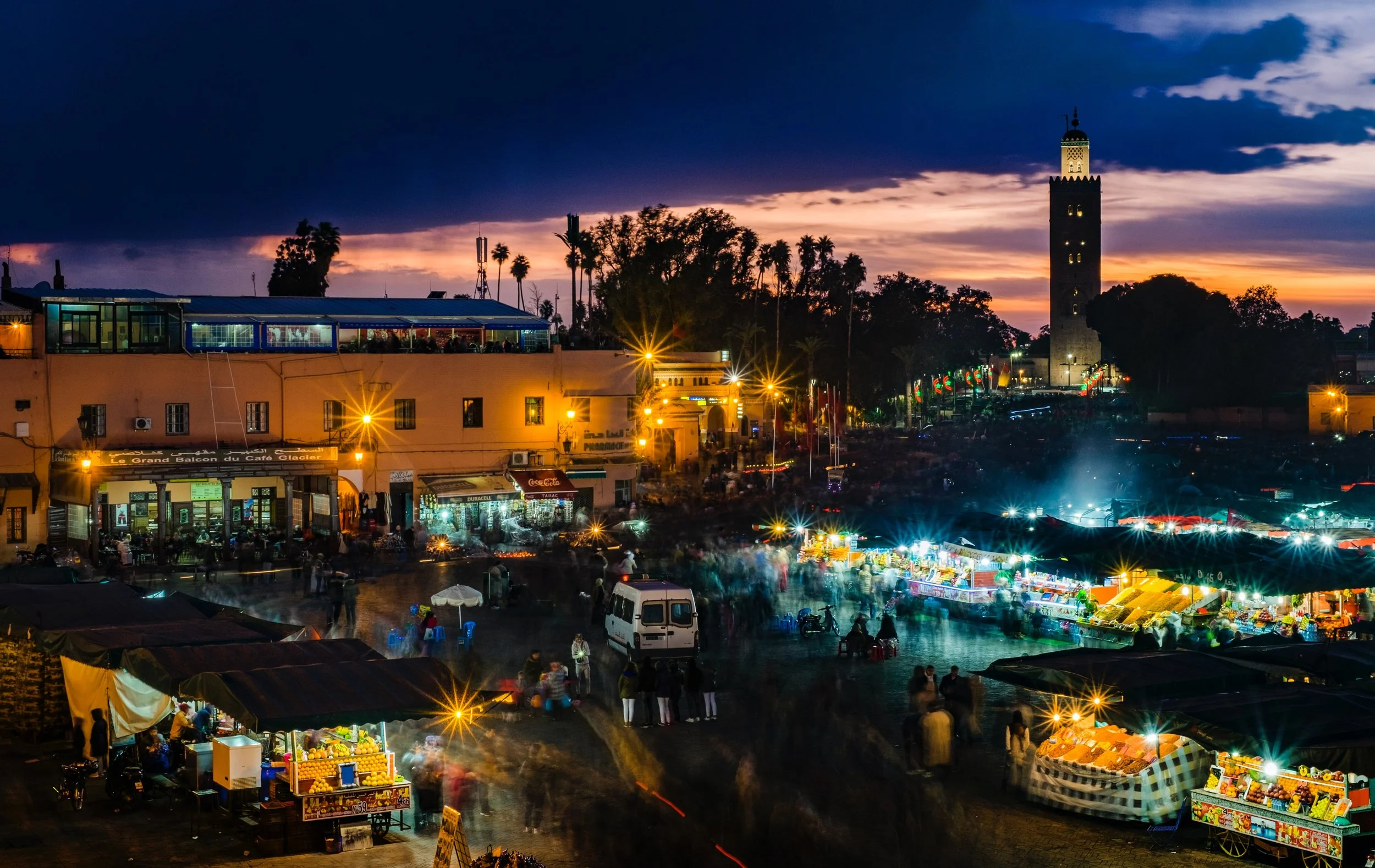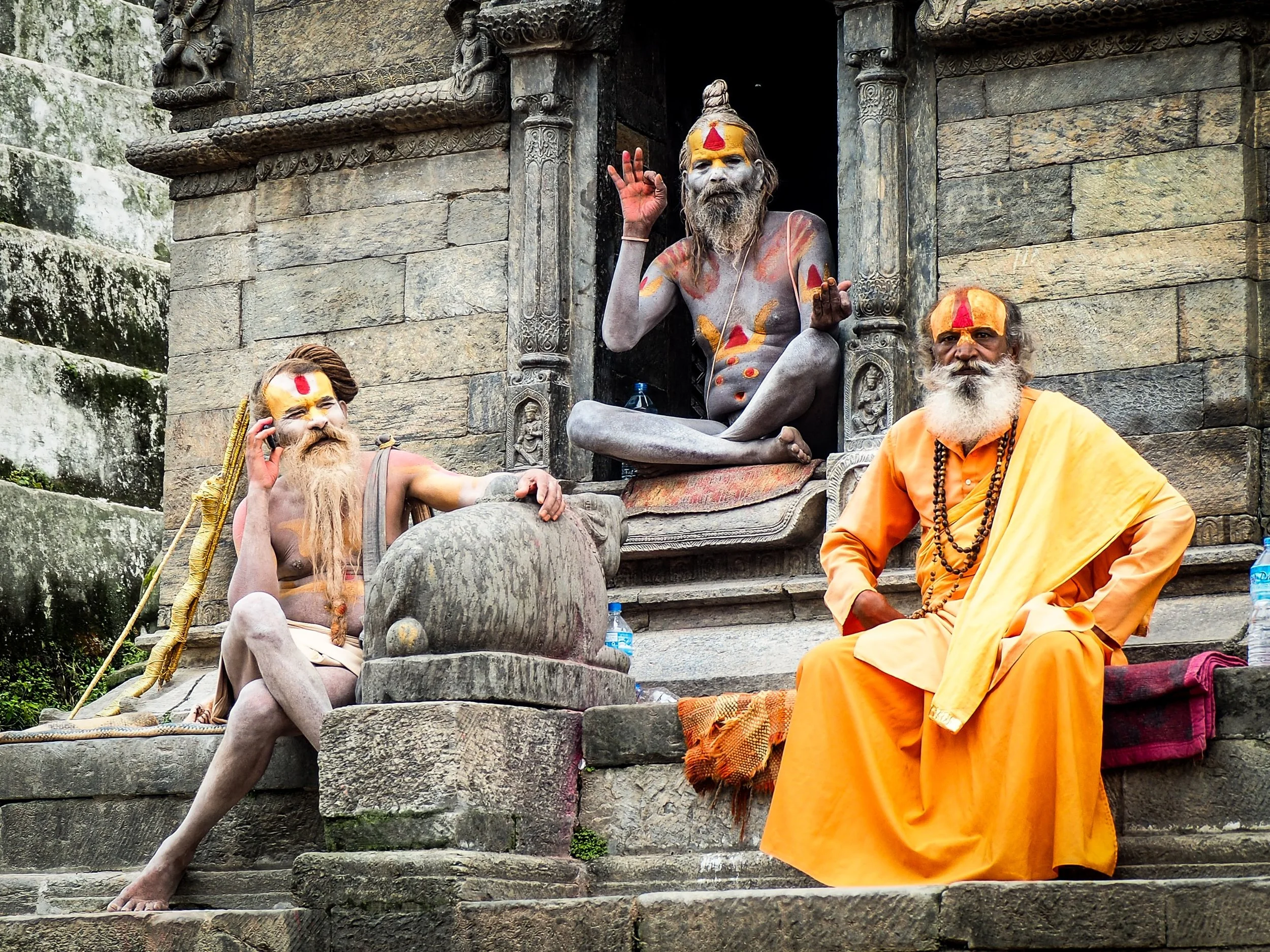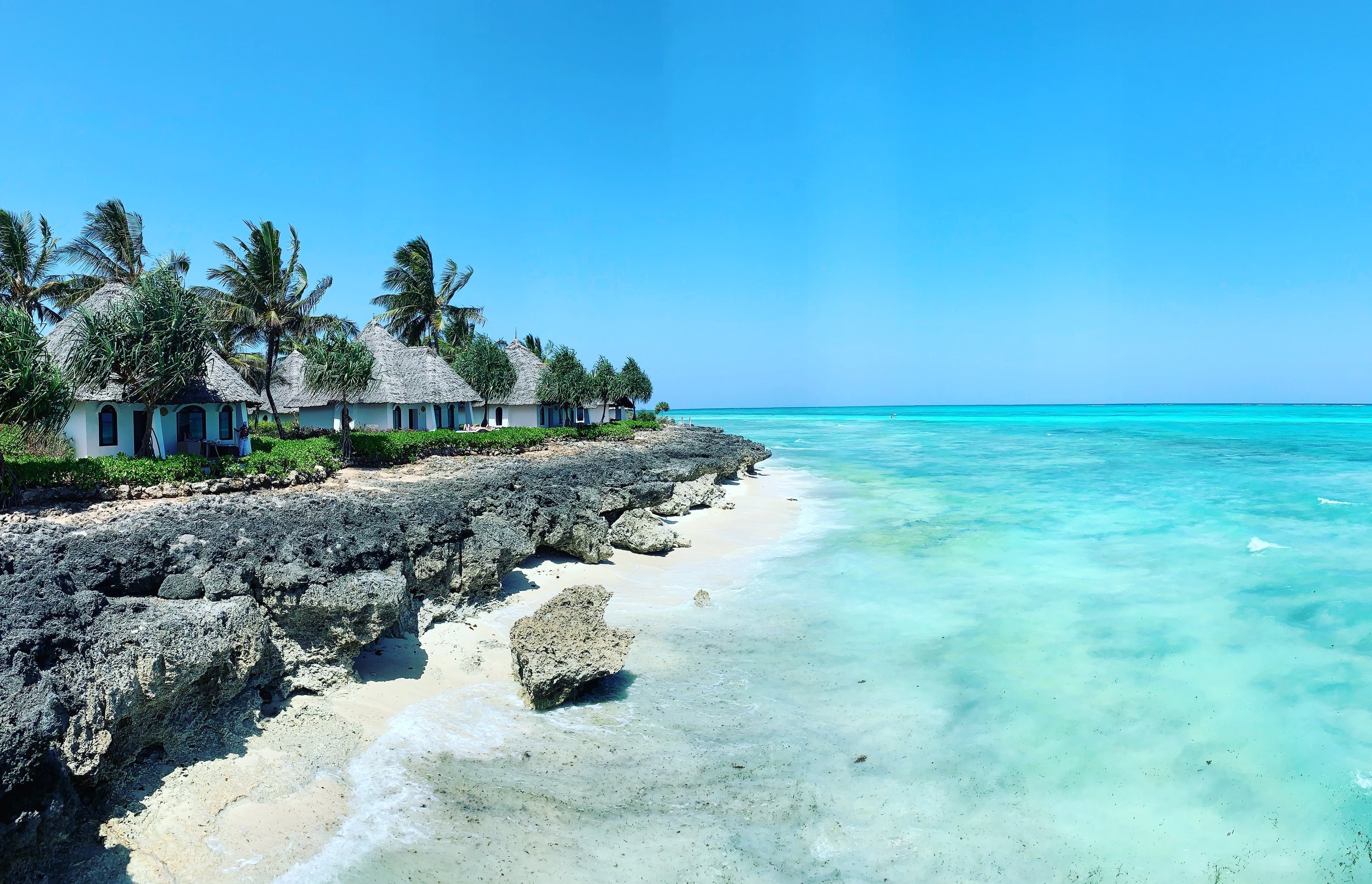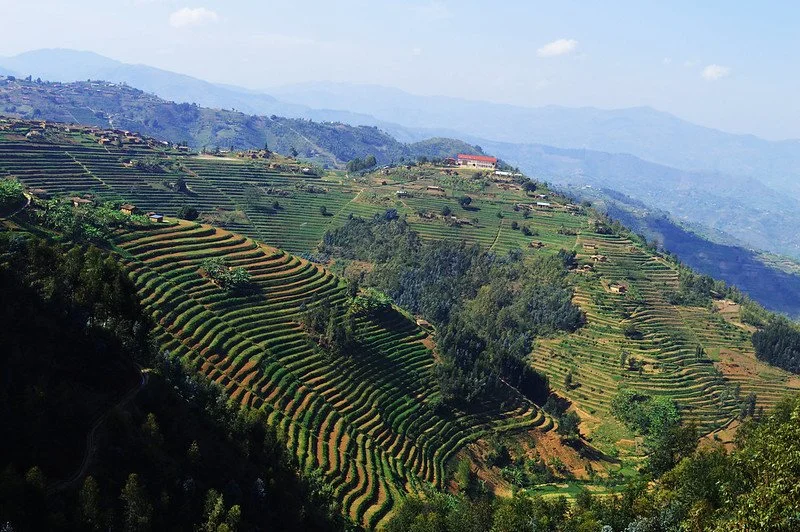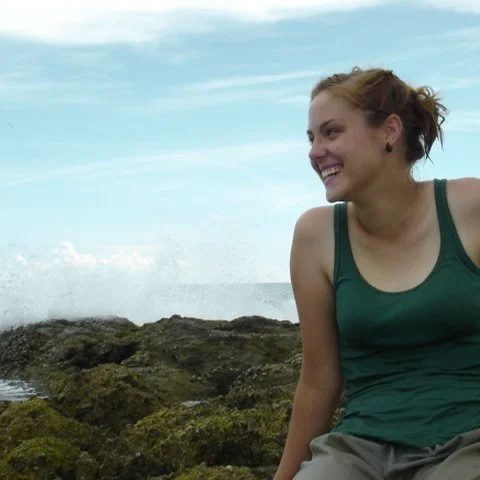From up-and-coming travel destinations like Rwanda to the otherworldly landscapes of Namibia, here’s the Catalyst Planet list of the best places to travel in 2023.
Wondering where the best places to travel in 2023 are? Whether you’re looking for a wildlife adventure or a moment to slow down, we hope this list of 20 fantastic destinations will inspire your coming year’s travel wishlist.
Swakopmund, Namibia
Coastal view of Swakopmund, Namibia. Birger Strahl on Unsplash.
Once a German colony, Swakopmund is nestled between the massive Namib Desert and the South Atlantic Ocean. Today, it retains remarkable German influence in its architecture and the large European population living and visiting here annually. Located on Namibia’s Skeleton Coast, Swakopmund is a hub for guided tours, museum visits, dolphin sightings, shopping and more. We recommend traveling along the C34 highway for the most striking views, where you’ll find the bones from animal skeletons and the remnants of wrecked ships along the coastline. Because this area of Namibia is so forbidding, it’s also one of the most pristine coastlines in the world. If ancient shipwrecks aren’t your thing, there are quite a few places to stop and enjoy the view as you drive north on the C34 road. At the Cape Cross Seal Reserve, you’ll find thousands of noisy fur seals and can walk along the fenced walkway to see them up close. And the Huab Lagoon is a stunning pink salt lagoon sitting just inland from the ocean, making it one more feature of the Skeleton Coast that will make you feel like you have landed on another planet.
2. Bazaruto Archipelago, Mozambique
A Dhow on the water at sunset. Pat Sakellari on Unsplash.
Bazaruto Archipelago should be at the top of your list if you’re looking for a coastline to spoil you forever. This grand expanse of wild, dune-backed shorelines lies just a few miles from the sleepy mainland town of Vilankulo, where sand-floor bars, simple thatched lodges and campsites are located. The archipelago is the type of place that makes you feel satisfied just by sitting and enjoying the unprecedented views. But if you need more than being barefoot and awestruck, activities include scuba diving the always-warm ocean water, discovering fishing spots and snorkeling along the pristine coral reefs. There are watersports, including sailing, water skiing, kayaking, and windsurfing, and of course, the conditions are lovely for taking a dip.
3. Marrakesh, Morocco
Nighttime look at Marrakesh. Zoltan Tasi on Unsplash.
Bathed in the glow of its mudbrick walls, the beautiful city of Marrakesh is like a cultural portal for lovers of history, tradition and art. Inside its proverbial walls, architectural masterpieces stand alongside evidence of ancient civilizations. Here, your first to-do is to simply stroll the city. Be sure to check out the old quarter where the historic heart of the former royal capital thumps and where the famous Koutoubia minaret stands. Reaching 252 feet high, you won’t miss the lighthouse of Marrakesh, and just around the corner, you’ll find the Menara Gardens founded during the Almohad dynasty. Along with the treasures you’ll unearth as you explore the city, when the sun is setting, Marrakesh looks like it’s been set ablaze in a way you have to see to believe.
4. Transylvania, Romania
A downward view of the Turda Salt Mine in Transylvania. Reeve Jolliffe CC2.0
Sitting larger than Austria, you’ve probably heard that Transylvania is a mysterious place somewhere in Eastern Europe where vampires hidden in menacing medieval castles come from. Located in Bran, Dracula’s castle can be easily visited on day trips from Brasov, Bucharest, and Sibiu. But if you want to avoid all the Dracula tourist traps, we recommend visiting one of Transylvania’s underground salt mines. Breathing in salty air is healthy for your lungs; there’s even evidence the Romans spent time in salt mines 2,000 years ago for that very reason. Visiting salt mines in Romania is like spending a day at the beach—reading, socializing, playing games and sports, and even enjoying a wine tasting. We recommend the Turda Salt Mine, which has an underground lake, famous for its beautiful light installations creating stunning, unique views of the huge grottos, open spaces and salt-covered walls. When you’re ready to come above ground, check out Romania's spiritual capital—Alba Iulia Citadel, the Transfagarasan Highway—a thrilling ride with incredible views, and Corvin Castle—one of the Seven Wonders of Romania.
5. Kathmandu, Nepal
Sadhus posing for a photo in Kathmandu. Fares Nimri on Unsplash.
Kathmandu is the thriving epicenter of Nepal. A local and visitor haunt, it’s an area that sells everything from street food, spices, gifts and everyday goodies. If you’re looking for a day on foot, check out the popular Thamel District. You’ll find lots of eateries, unique shops and places like the Garden of Dreams—a tranquil corner off the main thoroughfare inside a pretty park (an excellent spot for snapping pictures). After, head to the top of Swayambhu Stupas, a Unesco World Heritage site and religious temple complex. You’ll see the three-hundred-plus rock-hewn steps that lead to the temple, which date back centuries. Once you reach the top, you’ll find the best panorama of Kathmandu Valley. Nepalese food is arguably one of the most underrated cuisines, so be sure to bring your adventurous culinary spirit. But no matter your preference, get your hands on some Momo, a type of dumpling that’s inexpensive and delicious, a Nepalese favorite.
6. Kaieteur National Park, Guyana
A rainbow crosses in front of Kaieteur Falls. Soren Riise CC2.0
Did you know that one of the world’s most beautiful waterfalls is tucked away in the Amazon, and it’s four times taller than Niagara Falls? Guyana might be one of the best-kept secrets in eco-tourism, partly because it’s home to Kaieteur Falls. This waterfall is so vast and powerful that it looks like it's falling off the world’s edge. Located on the Potaro River in Kaieteur National Park, the falls are incredibly remote, surrounded by the lush Amazon rainforest. Despite its location, travelers can access the falls by chartering a plane or following a hiking tour to the top. Walking through Kaieteur National Park is a worthwhile journey in itself. Among the many trails, you’ll see plenty of colorful birds, frogs and plant life unique to the wildly diverse Amazon rainforest. A 3-day overland trip to Kaieteur is the preferred route for nature lovers and adventure seekers.
7. Nosy Boraha, Madagascar
The coast of Nosy Boraha. Rod Waddington. CC2.0
Nosy Boraha, also known as the Ile Sainte Marie, is a long stretch of land that rolls along the eastern edge of Madagascar, just across the whale-packed waters of the Baie de Tintingue. Arguably one of the most beautiful enclaves of the country, Nosy Boraha is actually one of the lesser traversed beaches, making it the perfect spot for travelers who like getting off the tourist track. With powdery white sands dotted with giant boulders and coconut palms, the vistas are completed by a backdrop of mangroves. You can stop at the old buccaneer cemetery and learn about the country’s pirate history, or take a boat out to see one of the most spectacular whale migrations in the world.
8. Anchorage, Alaska
An aerial view of Anchorage. Kolby CC2.0
Located within Denaʼina Ełnena, on the traditional homelands of the Dena’ina Athabascan people and the Native Village of Eklutna, Anchorage is the USA’s best-kept secret. This is partly because the city combines wild beauty, convenient urban comforts, mesmerizing outdoor spaces, and captivating arts and culture. Between March and September, Anchorage has more daylight than any other 49 states, which means plenty of time to hike a nearby mountain peak, follow a woodsy bike trail, cast a line and enjoy dinner al fresco. As Alaska’s largest city, Anchorage is filled with art galleries, concert venues, and creative performances and displays, all featuring various Alaskan artists and touring acts. While you’re there, look for special monthly First Friday viewings at local galleries and cafes, and learn more about Alaska’s distinct Indigenous cultures via permanent displays, public art installations and occasional traditional performances throughout the city. Anchorage is also an under-the-radar beer town, with more than a dozen breweries in the city, in case you fancy a cold one.
9. Yukon, Canada
A night sky featuring Aurora Borealis. Leonard Laub on Unsplash
The Yukon is located in Canada’s westernmost point and shares borders with the Northwest Territories, British Columbia, Alaska and the Beaufort Sea. Vast, wild, and barely touched by human hands, the Yukon Territory is one of the best places to view North American wildlife. At the Yukon Wildlife Preserve, many species native to the region, such as musk ox, Canadian lynx, elk, and bison, can all be seen at relatively close range. The Takhini Hot Springs has drawn travelers to its natural mineral waters for more than 100 years. It’s not only a great spot to glimpse the wildlife, but you’ll likely have a chance to watch the elusive Northern Lights dance across the Yukon sky, an unforgettable experience. The best time of year to catch the Northern Lights is in winter—from the end of August to the middle of April—we’re talking prime Aurora Borealis viewings. And if hot springs aren’t your style, nestled on the banks of the mighty Yukon River, Whitehorse is another excellent base to see the Northern Lights away from the city’s light pollution. It's a small town with plenty of history and culture, offering easy access to the open Yukon.
10. Oaxaca, Mexico
A snapshot of the streets of Oaxaca. Roman Lopez on Unsplash.
Oaxaca, Mexico, is undoubtedly one of the planet’s ultimate food and drink destinations. But aside from savoring the world-class cuisine offered throughout Oaxaca, the hub's bustling market scene is a great place to absorb a bit of everything. Mercado 20 de Noviembre is famous for its variety of food stalls featuring everything from baked goods and pastries to an entire aisle of roasted proteins, aka El Pasillo de las Carnes Asadas. For something smaller and more vegetarian-friendly, explore Mercado Organico La Cosecha. And don’t forget mezcal, a distilled agave spirit traditional to the Oaxacan region. It’s been made here for centuries using techniques that have largely resisted the prying hands of modern machination. Even if you’re not a foodie, the state of Oaxaca is home to over 300 miles of coastline, so there's plenty more to explore beyond the food and tourist traps.
11. Uyuni Salt Flat, Bolivia
A person crossing the Bolivian Salt Flats. Photo by Jeison Higuita on Unsplash.
Those who want an authentic and spectacular South American adventure should consider Bolivia. This mountainous country is the only landlocked nation on the continent and boasts incredible mountains, the world’s highest navigable lake, cultural cities, spectacular cloud formations and even rainforests. Because it’s a little ways off the beaten tourist path, it’s a great spot to travel economically and get an authentic glimpse of Bolivian life. A real gem of Bolivia is located in the Andes Mountains: Salar de Uyuni, the largest salt flat in the world. It is extraordinarily flat, with average altitude variations within 3 feet over the entire area of the Salar. This salty expanse creates an unending radiating-white floor during the dry season, but the site is most breathtaking when it’s covered in water. During the rainy season, the reflection of the blue sky creates a spectacular and otherworldly landscape. And since you’re already in the Andes Mountains, the quiet town of Sorata serves as a great base camp for travelers who want to hike in the mountains of the Cordillera Real. The granite slopes of the Cordillera Real lie in the Altiplano, or “high plains,” of the widest part of the Andes.
12. San Pedro de Atacama, Chile
Las Piedras Rojas in San Pedro de Atacama, Chile. Diego Jimenez on Unsplash
Abutting the Atacama Desert and surrounded by a ring of volcanoes, Las Piedras Rojas (meaning Red Rocks) is a great expanse of red-hued rocks. Here, you can walk to the tops of these unique natural formations and spot a saline lake and the blinding white of the Salar de Talar, a small, clean salt flat. But if that’s not enough, Balloons Over Atacama brings travelers higher for utterly sensational views in their hot air balloons. From above, you can see the Volcano Licancabur silhouetted against the rising sun, the Valle de la Luna, and the blue streaks of salty water that are Laguna Cejar and Laguna Tebinquinche beyond. Located only a short distance from these Red Rocks are two lagoons, Miscanti and Miniques. Salt-rimmed and flanked on all sides, these lakes are perhaps the most beautiful in the Atacama Desert. It’s an authentic introduction to the barren landscapes of the Andean altiplano, but the combination of motionless water and the brightest blue sky you will ever see more than makes up for the stark, arid nature of the surrounding area.
13. El Calafate, Patagonia, Argentina
El Calafate domes in Patagonia. Jonas Dücker on Unsplash
Covering a massive part of Argentina, Patagonia is packed with outdoor adventure. It has some of South America’s best hiking, white water rafting, horseback riding, and wildlife spotting. You need at least a week to make the trip worthwhile. Every day, fleets of buses depart the compact, hugely popular Argentinian town of El Calafate for the Perito Moreno glacier—an accessible but icy spectacle of one of the world’s few advancing glaciers. A series of boardwalks lead to various viewpoints that allow you to contemplate this shining, blue-white wall of ice, and tour guides in El Calafate also arrange day-long catamaran cruises to more remote glaciers on Lake Argentina. With boutique hotels and hostels and a steak-, wine- and craft beer-heavy dining scene, El Calafate is a terrific jumping-off point for exploring the surrounding natural wonders. The peninsula is also home to sea lions, seals and over 180 species of seabirds. It’s also a half-day trip away from one of the most prolific rock art sites in South America, featuring over 800 stenciled outlines of human hands and puma, guanaco (wild cousin of the llama) and nandu (small ostrich) footprints.
14. Weligama, Sri Lanka
A surfer riding the waves in Sri Lanka. Photo by Jonas Dücker on Unsplash
Sri Lanka has been establishing itself as the prime surfing spot in Southeast Asia, and we’re certainly taking notice. With one coast facing the open Indian Ocean and the other facing the Bay of Bengal, Sri Lanka is set to provide the perfect wave for every surfer, regardless of skill level. Each side of the island has a different peak—the southwest in the winter and the east in the summer. On top of that, the vibe is chill, with surf bars dotting the shorelines and surf camps welcoming all levels. Weligama might not be the upscale vacation some folks are looking for, but it's firmly established itself as the place to start your Sri Lankan surf journey due to the enclave’s horseshoe shape offering 4.5 mile breaks. Some other shores to hit are Hiriketiya—a yet-to-be-discovered hotspot, Ahangama—for gorgeous reefs and excellent surf schools and Arugam Bay—for the best monsoon waters May-October.
15. Byan-Ulgii, Mongolia
A horse grazing in the Mongolian mountain range. Ariungoo Batzorig on Unsplash
The Altai Tavan Bogd National Park rises like a bulwark against the tri-state borders of China, Russia, and Kazakhstan. It bars the way to Siberia and snow-dusted Xinjiang with a series of more than five rugged peaks that rise to a whopping 2.5 miles above sea level. Hardy creatures make their home here in the form of hoofed ibexes. Here you can also spot the nomadic Tuvan tribespeople and their yurts which dot the banks of pretty Dayan Nuur in the summertime. Watching these legendary eagle hunters do their thing in the low-lying plains is a must-see. This reserve is also known for its ancient petroglyphs and mysterious Turkic sculptures. If the yurt lifestyle isn’t for you, then perhaps you might check out the legendary archers of Erdenet, famous throughout the steppe for their quick aim and accuracy, on the other side of Mongolia. Their homes are one of the few established urban spots in Mongolia. With 75,000 people, Erdenet is the second-largest town in the county. In fact, Erdenet began as a mining service center, its raison d’etre in the great open-faced copper quarries nearby. Today, it’s clean and developed, has central gardens, good museums and offers access to the mysterious Buddhist shrines of Amarbayasgalant Monastery to the northeast.
16. Plitvice, Croatia
Aerial view of Plitvice Lakes. Photo by Mike Swigunski on Unsplash.
Made up of 16 interconnected lakes that bump and flow into each other in a series of stunning waterfalls, the Plitvice Lakes were designated as Croatia’s first national park in 1949 and later became a UNESCO World Heritage Site in 1979. Picturesque wooden boardwalks crisscross the lakes, creating a fairytale experience where you can get close to the vivid natural beauty. If you want to take a day trip to Plitvice Lakes National Park, it’s best to do so from either Zagreb or Zadar. With views like these, it’s no wonder the Plitvice Lakes are no secret. Navigate the crowds by showing up early to explore the Lower Lakes, finding the postcard view of Plitvice Lakes at sunset, wandering further up the trails than most, and traveling in the off-season.
17. Zanzibar, Tanzania
The coast of Zanzibar. Med J on Unsplash
Zanzibar is blessed with ornate Omani imperial architecture and is a vibrant Islam-informed culture with beaches of the purest sand. Introduced around 500 years ago by Portuguese traders who carried them from their colonies in India and South America, spices have made Zanzibar a trading hub for centuries. Small organic set-ups today still produce cloves, nutmeg, cinnamon and more. One of the most sensory ways to appreciate the destination is to follow your nose through twisting backstreets. Don’t forget Mji Mkongwe, also known as Stone Town, the oldest part of Zanzibar City and the capital of Unguja island. Here you’ll see Swahili trading in action, just as it’s always been. With Islamic prayer calls on the air and atmospheric winding old alleys redolent of spices at every turn, this settlement is the heart and soul of the island. Stone Town mixes Persian, Arabic, Indian and European legacies creating something special for every type of traveler. Zanzibar is also home to Nakupenda, the perfect spot for swimming and snorkeling. Its clear waters flicker with marine life and will help you keep cool under the hot African sun. You might even glimpse the much-loved dolphins if you’re lucky.
18. Karongi, Rwanda
The beautiful Karongi hillside in Rwanda. IZUBA RIRASHE. CC2.0
Rwanda is set to be the next hotspot for luxury, eco and adventure travelers alike. The Karongi hillsides, covered in pines and eucalyptus, serve as a backdrop to the sparkling Lake Kivu and host luxury accommodations to suit even the most frugal travelers. Here, local fishermen’s songs are carried across the water at dawn and dusk as they paddle in unison. While there, enjoy a local favorite, Sambaza, a delicious fish found on most menus. New destinations mean new experiences; for a truly unique one, travelers can tour the nearby farmland and witness a herd of cattle that regularly swim to an island on Lake Kivu to reach their grazing grounds.
19. Castle Hill, New Zealand
Castle Hill’s limestone rock formations. Tyler Duston on Unsplash
Castle Hill New Zealand is a natural, historical and cultural wonder of New Zealand’s South Island. New Zealand has one of the most rapidly-changing and diverse landscapes. To illustrate this, the Castle Hill conservation area was once underneath a sizable inland sea known as the Waimakariri Basin. The limestone rocks were formed from years of sediment compression and then shaped by erosion following a significant uplifting event. This unique type of landscape is known as a Karst landscape, and it is a favorite spot for novice and experienced rock climbers. If the unpredictable weather of Arthur's Pass allows, then watching the sunset at Castle Hill is a bucket-list-worthy experience. The limestone formations create a unique and beautiful landscape that photographers dream of. The Arthur's Pass road is known to have some of the best night skies for Astro enthusiasts because of the remoteness and altitude.
Bonus: Did you know the Dalai Lama visited Castle Hill on his trip to New Zealand in 2002 and proclaimed the hill the Spiritual Center of the Universe.
20. South Georgia, Antarctica
A large group of penguins in South Georgia. Paul Carroll on Unsplash
South Georgia is one of the most remote and wildest places on earth and is home to two mountain ranges —the Salvesen and the Allardyce— which soar to a peak of almost 2 miles above the sea. In the summer, nearly 75% of the island is covered in snow, ice and glaciers. Enjoy the most picturesque parts with the low-lying grasslands, mighty glaciers, and dramatic fjords. The island is also called an Antarctic Oasis because of the vast numbers of penguins and seals that breed here. The marine ecosystem is considered one of the densest examples of biodiversity in the world. Visitors can spot seals on both the land and in the waters, along with a variety of whales passing through the area. Visit Fortuna Bay to explore the history of the land and Gold Harbour for a complete look at South Georgia’s wildlife and scenery. King penguins, Gentoos, and elephant seals are the major players in this all-natural amphitheater.
Raeann Mason
Raeann is an avid traveler, digital storyteller and guide writer. She holds a Bachelor’s degree in Mass Comm & Media Studies from the Walter Cronkite School of Journalism & Mass Communication. Passionate about a/effective journalism and cultural exchange, she is an advocate of international solidarity and people's liberation. Raeann hopes to reshape the culture of travel and hospitality to be both ethically sound and sustainable.



